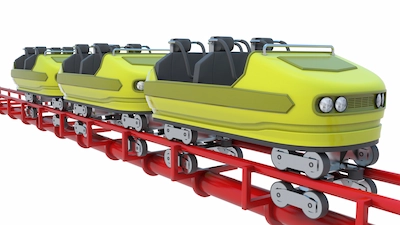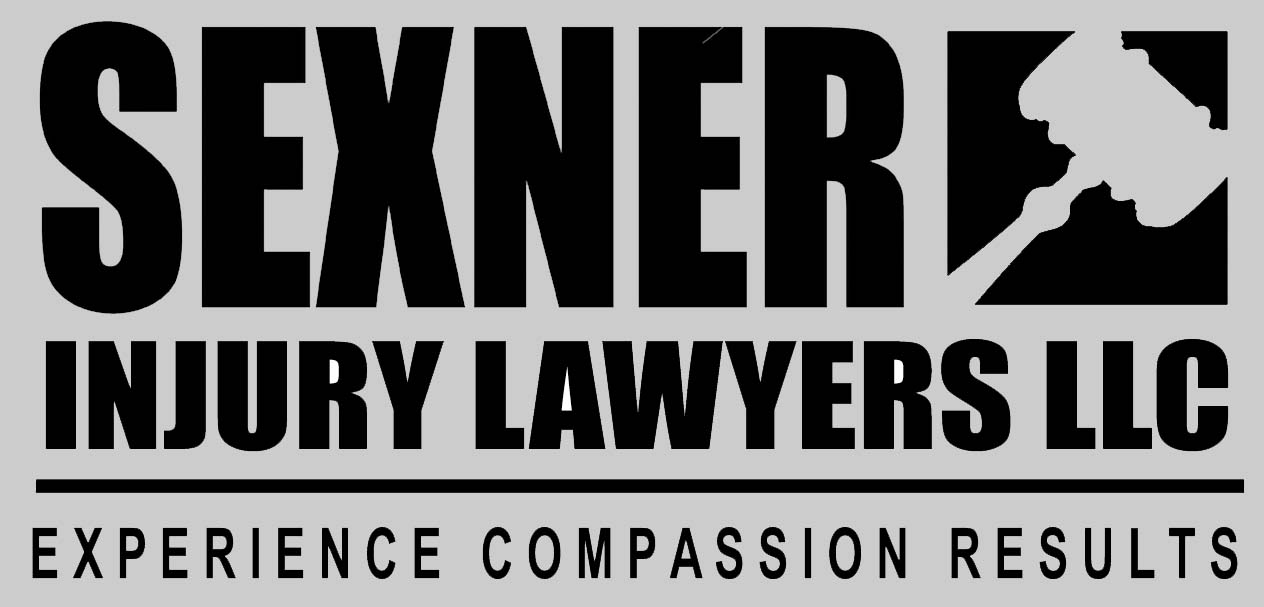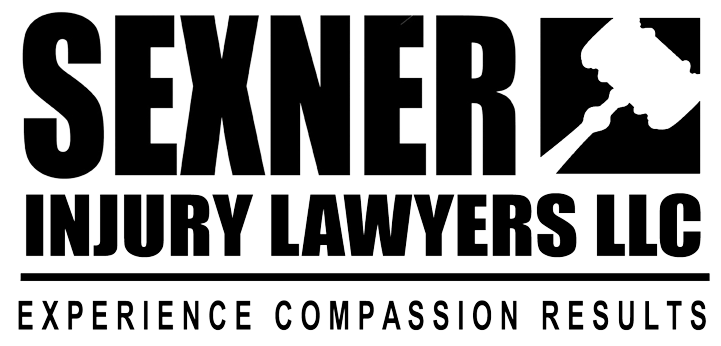Chicago Amusement Park Injury Attorneys
What You Need to Know About Injuries, Lawsuits, and Compensation
 Each year, millions of adults and children flock to amusement parks, theme parks, water parks and carnivals all over the country, from Chicago to Anaheim to Orlando. But while these parks are marketed as safe and entertaining, the reality is that accidents do happen — and sometimes the results are catastrophic. Thousands of visitors are injured each year in incidents ranging from broken bones to traumatic brain injuries, spinal cord damage, and even wrongful death on roller coasters, bumper cars, and other rides.
Each year, millions of adults and children flock to amusement parks, theme parks, water parks and carnivals all over the country, from Chicago to Anaheim to Orlando. But while these parks are marketed as safe and entertaining, the reality is that accidents do happen — and sometimes the results are catastrophic. Thousands of visitors are injured each year in incidents ranging from broken bones to traumatic brain injuries, spinal cord damage, and even wrongful death on roller coasters, bumper cars, and other rides.
If these injuries are due to the negligence of park owners, ride operators, or ride manufacturers, a lawsuit claiming money damages may be filed against those responsible. This comprehensive guide explores how amusement park accidents happen, your legal rights if you are injured, and real-world examples of lawsuits, settlements, and jury verdicts that demonstrate the seriousness of these cases.
Since 1990, the team of Chicago theme park accident lawyers at Sexner Injury Lawyers LLC has recovered millions of dollars on behalf of individuals and families affected by the negligence of others. Call us for free information 24 hours a day at (312) 243-9922.
Types of Amusement Park Injuries
Thrill rides are thrilling for a reason. They usually involve high speeds, close calls, and in the case of some roller coasters, may even invert the riders so that they travel upside down. As such, the machinery and computer programming required is usually very complicated and precise. There’s virtually no room for operator error, so when mistakes happen, injuries result. But even when the machinery is in perfect working order, the extreme nature of some of these rides may result in injuries anyway. Some of the most common injuries include:
- Brain aneurysms resulting from extra fast rides or roller coasters.
- Wrongful death from being thrown from a ride or striking an object.
- Neck, back, and head injuries from whiplash-type movements on coasters and spinning rides.
- Drownings on water rides, water slides, and lazy-river rides.
- Broken bones, cuts, and torn ligaments from unforeseen contact with fixed objects.
- Traumatic brain injury (TBI) from extreme stress, speed, and G-forces placed on the brain during acceleration, deceleration, or contacting a fixed object.
- Stroke or transient ischemic attack (TIA) due to interrupted blood supply.
Causes of Amusement Park Accidents
Amusements parks are fast-paced, crowded entertainment venues that often employ thousands of people working hundreds of different jobs simultaneously. Coordinating each job is important in maintaining safety, and if any mistakes occur, injuries and deaths are bound to follow. In many cases, they can be traced back to negligence, improper maintenance, or design flaws. Some of the most common causes include:
- Ride Malfunctions and Mechanical Failures: Such as a roller coaster car detaching; a lap restraint or lap bar opening mid-ride; a safety lock opening; a water raft becoming airborne; rider ejection; loose cabling; cables snapping; broken bolts, failed sensors, derailments or other machinery failures.
- Guest Misconduct
Although guest misbehavior may reduce recovery, parks still must anticipate foreseeable misuse and design rides with redundant safety features. - Ride Operator Failures: Such as a ride operator purposefully, negligently, or recklessly operating the ride incorrectly or ignoring warning lights, failure to properly train the ride operator, failure to enforce required height and weight restrictions, improperly loading or unloading passengers, failure to bring the ride to a full stop, failure to properly lock restraints, or failure to shut down the ride completely.
- Defective Design, Maintenance, and Assembly Failures: Such as improper machine design, improper installation or assembly of the ride, structural flaws, protruding or sharp parts, or improper maintenance leading to errors such as exposed electrical wiring or electrical failures. A poorly engineered ride may generate excessive G-forces or fail to accommodate all body types safely, resulting in injuries even when the ride operates as intended.
- Inherent Ride Characteristics: Even when designed, assembled, and maintained according to plan, certain rides by their very nature still place riders at risk for injuries such as loss of consciousness, cerebral hemorrhage, or subdural hematoma, due to intense spinning, high acceleration or extreme deceleration involved.
- Inadequate Warnings, Security or Signage: Such as failure to put proper security measures into place, install high fencing, post proper warning signs, install adequate lighting, warn riders with certain medical conditions or pregnancy, or closely monitor those who attempt to retrieve dropped phones or hats that have fallen from rides.
- Poor Supervision or Staffing: Water parks, Go Kart racing and other high-risk attractions require sufficient staffing and quick emergency response. Delays can worsen injuries.
Successfully Filing an Amusement Park Injury Lawsuit
Some of the legal claims that may be filed against theme parks, amusement parks, water parks, and carnival owners/operators allege:
- Negligence: When an amusement park accident is caused by a lack of attention or carelessness on the part of a park employee, a claim for negligence can be successfully prosecuted against those responsible. Some examples include a failure to maintain the ride in a safe condition, giving the wrong instructions, failing to provide proper warnings, or operating the ride improperly, among other things.
- Premises Liability: It’s the obligation of amusement park and carnival operators to create and maintain a safe environment for all visitors. When a visitor is injured or killed while on the premises, a lawsuit alleging premises liability may be filed.
- Product Liability: Sometimes, a ride is properly maintained and properly operated and yet, a rider is still injured or killed because the design of the ride (or a part of the ride such as a lap bar) was defective. Under some circumstances, the attorney can sue not only the manufacturer, but also the ride owner for design defects, manufacturing defects, or failure to warn.
- Wrongful Death: In circumstances when a person is killed due to the negligent or reckless actions (or failure to act) of another person or company, a claim for wrongful death may be filed to recover money damages on behalf of family members left behind for loss of companionship, support, and funeral expenses.
The Insurance Company May Try to Blame You
In order for an injury or wrongful death lawsuit to be won against an amusement park, theme park, or carnival, an attorney must demonstrate that the other party was at fault in some way. However, the other side will undoubtedly attempt to avoid responsibility (and avoid paying money damages) by shifting the fault to the rider. They will often try to do this by pointing to:
- Assumption of risk: They may say that the rider knew that the ride had risks before getting on it and knew that bad things might happen, so the rider “assumed the risk” and now can’t blame the park for the injury or death. Although parks may put forth this argument, the law generally distinguishes between ordinary risks and those risks created by negligence or defects. Guests do not assume the risk of poorly maintained or defective rides.
- Rider safety errors: They may say that the rider did something wrong and that’s why the rider was injured, such as rocking the ride, standing up, or failing to follow posted safety rules or verbal instructions.
- Ticket disclaimers: On the back of virtually every ticket, from a movie-theater ticket to a concert ticket, is a disclaimer, which is legal language intended to absolve (release) the company from any responsibility in the event of an accident.
- Comparative Fault: Some states allow damages to be reduced if the injured guest contributed to the accident (for example, by standing up during a ride).
But experienced and knowledgeable injury attorneys know how to respond to attacks of this nature and to direct the blame back at those truly responsible: ride operators, manufacturers, and amusement park companies.
What to Do If Injured on an Amusement Park Ride
What you do immediately after you or a loved one has been injured on an amusement park ride is of critical importance:
- Seek immediate medical attention: Nothing is more important than your health. Depending on the extent of the injury, you may wish to seek treatment from an on-site medical doctor or to call 911 for emergency medical care and go to the closest hospital.
- Report the Incident Immediately: Notify park management and request a written incident report.
- Collect evidence: Once medical attention has been received, someone should focus on collecting whatever evidence is available to be used later in a possible lawsuit. Sources of evidence include the names and phone numbers of witnesses or park employees, taking photographs or video of warning signs and other relevant things, etc.
- Keep all paperwork: This includes ticket stubs, hospital bills and records, insurance payments, records of lost time from work, etc.
- Do Not Discuss Specifics With Others: Other than doctors or hospital staff that need to know how you were injured, don’t discuss specifics with insurance adjusters or park representatives, other than confirming that you were injured on their property. Adjusters and representatives may try to trick you into saying something that places the blame on you and ruins your chances of successfully filing a claim against them.
- Do Not Sign Anything
Parks may ask you to sign waivers or accept a quick settlement. Speak to a lawyer first. - Immediately Contact an Experienced Lawyer: An experienced amusement park injury attorney can speak on your behalf to insurance adjusters and dramatically increase your chances for a successful claim. The legal team at Sexner Injury Lawyers LLC is available 24 hours a day with free information at (312) 243-9922.
Real-World Examples: Lawsuits, Settlements, and Jury Verdicts
Many amusement park accident cases have resulted in multimillion-dollar settlements and verdicts. Here are just a few:
Disney Parks
- $25 Million Settlement – Sailing Ship Columbia Accident
Disneyland paid $25 million after a guest was killed when a metal cleat flew loose from the Sailing Ship Columbia and struck him in the head. - $1 Million Per Parent – Child Drowning Case
In Florida, a jury awarded $1 million to each parent after their child drowned at a Disney water attraction, finding inadequate supervision. - Other Disney Accidents
Guests have successfully sued Disney over tram, bus, and cart accidents, a child who suffered brain damage due to injuries involving the Roger Rabbit Ride as well as injuries that occurred at Space Mountain, and many other rides.
Universal Studios
- $12.5 Million Settlement – Tram Accident
Universal Studios settled a case for $12.5 million after a tram collided with a barrier, injuring multiple riders. - Jaws Ride Lawsuit
A man sued Universal for $1 million after falling into the water when a railing broke on the Jaws boat ride. - E.T. Adventure Ride Claims
Multiple claims have been made for injuries on this ride.
Six Flags, Knott’s Berry Farm, and Other Parks
- Six Flags – $15 Million Settlement
After a roller coaster malfunction ejected a rider and caused permanent paralysis, Six Flags paid $15 million to settle the case. - Knott’s Berry Farm – $10 Million Settlement
A ride malfunction at Knott’s Berry Farm led to a $10 million payout to a severely injured rider. - Glenwood Caverns – $205 Million Jury Verdict
The family of 6-year-old was awarded $205 million after she died when operators failed to properly secure her in a drop-ride attraction. - Icon Park – $310 Million Verdict
The family of 14-year-old who fell from the Orlando FreeFall ride, received a $310 million jury verdict, one of the largest ever in a U.S. amusement ride case.
These outcomes demonstrate how courts take safety failures seriously — and how verdicts can reach into the hundreds of millions.
Why are Amusement Park Accident Cases so Complex?
These cases are among the most challenging in personal injury law and require a dedicated and knowledgeable legal team to be successful. Why?
- Engineering Expertise Required – Lawyers must work with mechanical engineers and ride designers to analyze failures.
- Accident Reconstruction – High-speed video, computer simulations, and forensic evidence needed to help recreate what happened.
- Medical Testimony – Proving causation and long-term damages requires expert medical opinion.
- Massive Discovery – Maintenance records, inspection logs, and internal safety reports must be obtained and analyzed.
- Corporate Defense Teams – Large parks are defended by high-priced lawyers who will fight your claims aggressively.
Because of these challenges, you should only trust your case to a law firm with experience litigating against major corporations and insurance carriers.
How the Sexner Injury Lawyers LLC Team Can Help
At Sexner Injury Lawyers LLC, we understand the unique challenges of amusement park accident cases. Our attorneys:
- Investigate rides and secure maintenance records
- Work with top experts to prove negligence or defective design
- Calculate damages for medical care, lost wages, and pain and suffering
- Negotiate aggressively with insurance companies
- Take cases to trial whenever necessary to get full justice
With millions already recovered for our clients and decades of litigation experience, we have the resources and dedication to stand up to powerful corporations and win.
There are never any legal fees until we are successful on your behalf. That’s our guarantee to you. Our legal team has a proven track record of success and we’re available 24 hours a day – every day of the year. Call us now to see how we can help you at (312) 243-9922.

